A year ago we published this article to honor the memory of Nicolas Roeg, who has just passed away. Today, on the anniversary of his death, and following the recent news events concerning the lagoon city, rereading these notes on the archetypal dimension of "Don't Look Now" can help us also reflect on human frailty in a world where desacralization and the constant threat of loss of meaning reign: a world that seems ever more dangerously, day after day, on the verge of sinking.
di Marco Maculotti
updated version of the article originally published on The sign with the title "The Red Shocking Venice of Nicolas Roeg"
The cities in the world capable, at the level of Venice, of conveying certain inner sensations, combining macrocosm and microcosm in a dreamlike suspension of time and reality can be counted on the fingers of one hand. Labyrinthine and Babelic, with a destiny indelibly connected to the perennial action of the water flows that pierce it, Venice has always had a certain authority as a picture of existential and erotic tragedies, from the life of Giacomo Casanova to The merchant of Venice Shakespearean, up to the most recent Morte a Venezia by Thomas Mann a Fire by D'Annunzio.
And it certainly comes as no surprise that, with the advent of cinema, the city has often been used by filmmakers more than just a narrative background, but almost at the level of added character: a sort of faceless protagonist, whose influence on the psyche of the other actors is nevertheless very evident. This is palpable in homegrown films such as Who saw her die? by Aldo Lado (1972) and Only Black by Antonio Bido (1978), but even more so in another film of those years: Don't Look Now by Nicolas Roeg (released in Italy with the title In Venice… a shocking red December!), a 1973 film - moreover released in theaters together with another cult of those years, The Wicker Man by Hardy / Shaffer - inspired by a short story by the writer Daphne Du Maurier, among whose stories the best known is undoubtedly birds, from which Hitchcock's film of the same name was made.

⁂ ⁂ ⁂
At the center of the narration are two English spouses, John and Laura Baxter (played respectively by Donald Sutherland and Julie Christie), transferred to the lagoon capital a few months after the untimely death of their youngest daughter, Christine, who tragically drowned in a stream. The reason for the transfer is also of a working nature: John is in fact called to take care of the restoration of the church of San Niccolò - as well as the protagonist of The house with laughing windows di Pupi Avati a few years later -, in which the presence of disturbing Gothic elements such as statues of demons and gargoyles they will do nothing but plunge him into the most absolute anguish.
For her part, Laura, who has also fallen into depression due to the trauma, makes the acquaintance of two Scottish sisters named Wendy and Heather; she is blind but endowed with mediumistic powers, thanks to which Laura hopes she can reconnect to Christine's soul. But when the medium begs Laura to warn her husband to leave Venice as soon as possible, since an impending doom seems to hover over him, the latter does not give weight to the psychic's words, and chooses to remain in the Lagoon. Instead, Laura will suddenly return to England, due to an accident that happened to her eldest son. Meanwhile, an uninterrupted series of crimes begins to stain Venice with blood.

Deprived of the company of his wife, John continues his personal and unstoppable descensus to the underworld. The morning after Laura's departure, during a trip on the vaporetto, he seems to see her aboard a gondola in the company of the two feared Scottish sisters: worried about his wife's mental state and hypothesizing a possible kidnapping against her by the two women, John reports the disappearance of his wife to the police, but the commissioner will pour on him the suspicions for the murders that are tainting Venice.
Dream and reality seem to mix without the possibility of clear distinction, and a fatal fate seems to weigh menacingly on him: during a restoration operation in the church he risks dying by falling from a scaffolding and, moreover, wandering through the narrow alleys and ghostly canals of the city, more than once he glimpses a short figure, dressed in a red raincoat, hiding or escaping around corners: John cannot avoid linking the apparitions of the mysterious figure to the ghost of his prematurely deceased daughter.
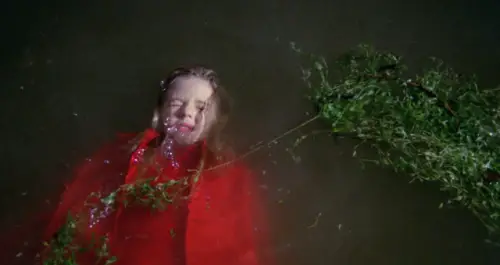
⁂ ⁂ ⁂
Beyond the impeccable performance of Donald Sutherland, who appears in the film as an alienated individual on the verge of a nervous breakdown, perennially anxious and obsessed with the figure of his prematurely deceased daughter, the absolute protagonist of Don't Look Now it is - as anticipated at the beginning of the article - inevitably Venice. The lagoon city, with its still and ghostly canals, its mists and humid miasmas, its peeling walls covered with torn and faded posters, its narrow and arched alleys is perfect not only as a setting for this parapsychological thriller, but also as a metaphor itself, place of the suffering soul of the Baxters, which must be credited with visually lowering the viewer into a state of oppressive, almost dreamlike, suspense.
From a metaphorical point of view it is precisely the depression into which John finds himself gradually sinking into a real murderer: an impalpable killer who, once introduced into the now torn mind of the protagonist, leads him to see ghosts, deaths, ominous premonitions everywhere. , until the tragic epilogue.
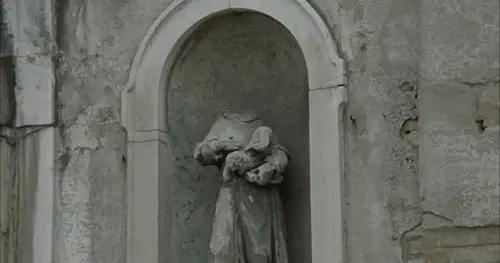
On the other hand, none of the murders are shown on video cameras: Roeg is interested only and solely in staging, in the manner of an impressionist painter, the mental state of the protagonist, through a nebulous and sinister carousel of images. suggestive, one could almost say archetypal (the decadent statues and frescoes, the gargoyles, the labyrinthine and heavy Venice, etc.), to immerse the viewer in its overflowing existential flow, with all the debris that it drags behind.
The deformed dwarf armed with a cutlass - reminiscent of terrifying folklore characters such as the Old Hag or witches who replace babies in the crib - thus becomes a mere external image of a silent disease which, manifesting itself in the protagonist's increasingly dejected psyche, appears to him as a grotesque and unbearable grin, almost a mockery with a Ligottian flavor.
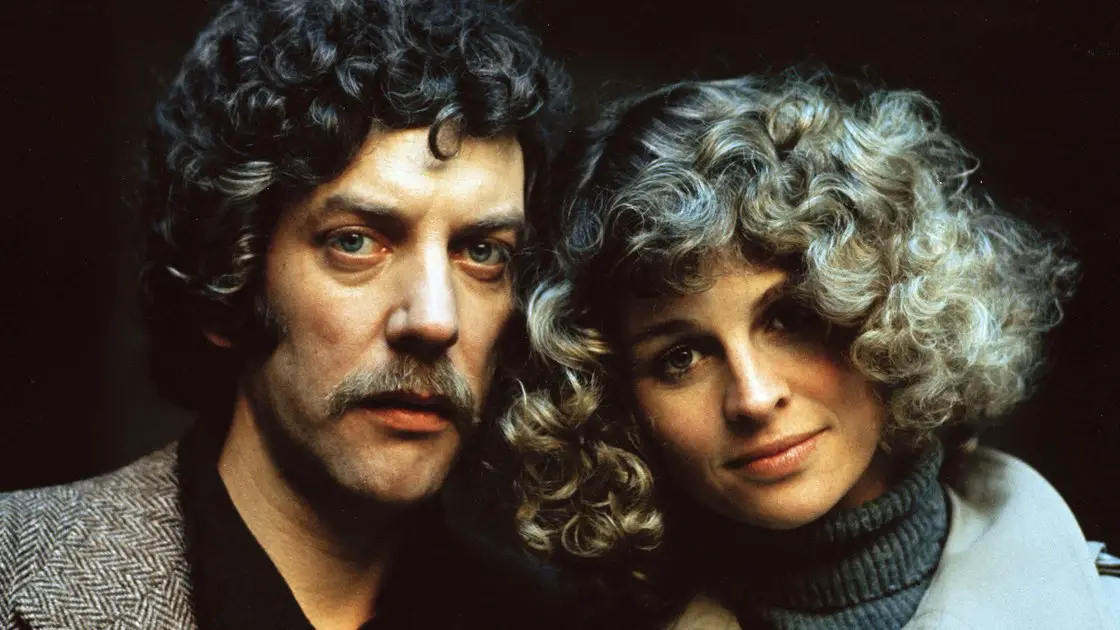
Thus John, who personifies in the plot of the film the condition of post-traumatic alienation of modern man, is a modern Ulysses who wanders without a homeland, reconstructing mosaics and reattaching non-existent heads to monstrous statues., too busy immersing himself in the fictitious external reality to realize that it is his personal mosaic that, once broken into a thousand pieces by the tragedy suffered, he will never be able to reconstruct and that it is his head that will never be able to reunite to her wandering body between past ghosts and future premonitions - himself a ghost.
Upon the death of the daughter (which is, esoterically, thesoul), inevitably follows the katabasis, while his wife desperately pursues the remnants of a world of prophets, healers and soothsayers that disappears in great strides. According to this reading, John can be seen as the "rational mind" and his wife Laura as the "emotional mind". The trauma of soul loss is a harbinger of trauma for both of us, but John, that is, the rational mind, is less inclined to show it to the outside.
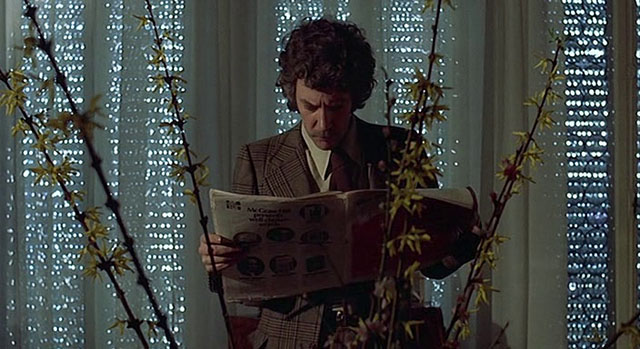
⁂ ⁂ ⁂
In this sense John can also impersonate the failure of modern man, after the severing that took place in recent centuries with all those ties and connections with the super-natural and the beyond that in some way were able to give him comfort in extreme situations; the dramatic condition of the "Western" man, deluded to lead an existence that remains forward (but to where, then?) at all costs in the tracks of "psychological balance" and "rationality", despite the unsustainable realization that a failure of the sense it constantly weighs on its existence. In fact, on a collective level, it is the same trauma resulting from the “discovery” of the so-called Nietzschean “death of god”.
Doubled between the restoration of death icons, in which he no longer even believes and dark omens of the near future, lost among the ghosts of the past and the threats that fatally loom over him, is the present what was ultimately lost. Only fleeting glimpses of truth come to his eyes and mind, brief illuminations - the apparitions of the figure in a red raincoat, the finding of the naked doll on the edge of a lonely canal, the connection between the corpse found in an opaque and muddy channel and that of his own child - the few and only moments in which he fully recognizes the tragedy of his condition and, although morbidly intrigued by these signs, tries in vain and vainly to remove them from his mind.

It becomes so inevitable that in the end the instant the truth is revealed to him firsthand, without any medium, he appears naked in the face of her tragedy, like a shriveled statue full of cracks and motionless in its cry of despair.
In all this, inevitably, even the sex scenes present in the film - although they are so passionate as to make one believe that there really was an intimate relationship between Sutherland and Christie at the time of filming - are emptied of their erotic charge by a clever editing of Roeg that - anticipating the analogous scene of Eyes Wide Shut, Stanley Kubrick's "swan song" - interposes them to the footage of the moment in which the two, now satisfied by the fake enjoyment of a purely physical embrace, get dressed and leave the hotel to immerse themselves again in the jaws of their invisible disease, perfectly represented by the mists and miasmas emanating from the Venetian canals.
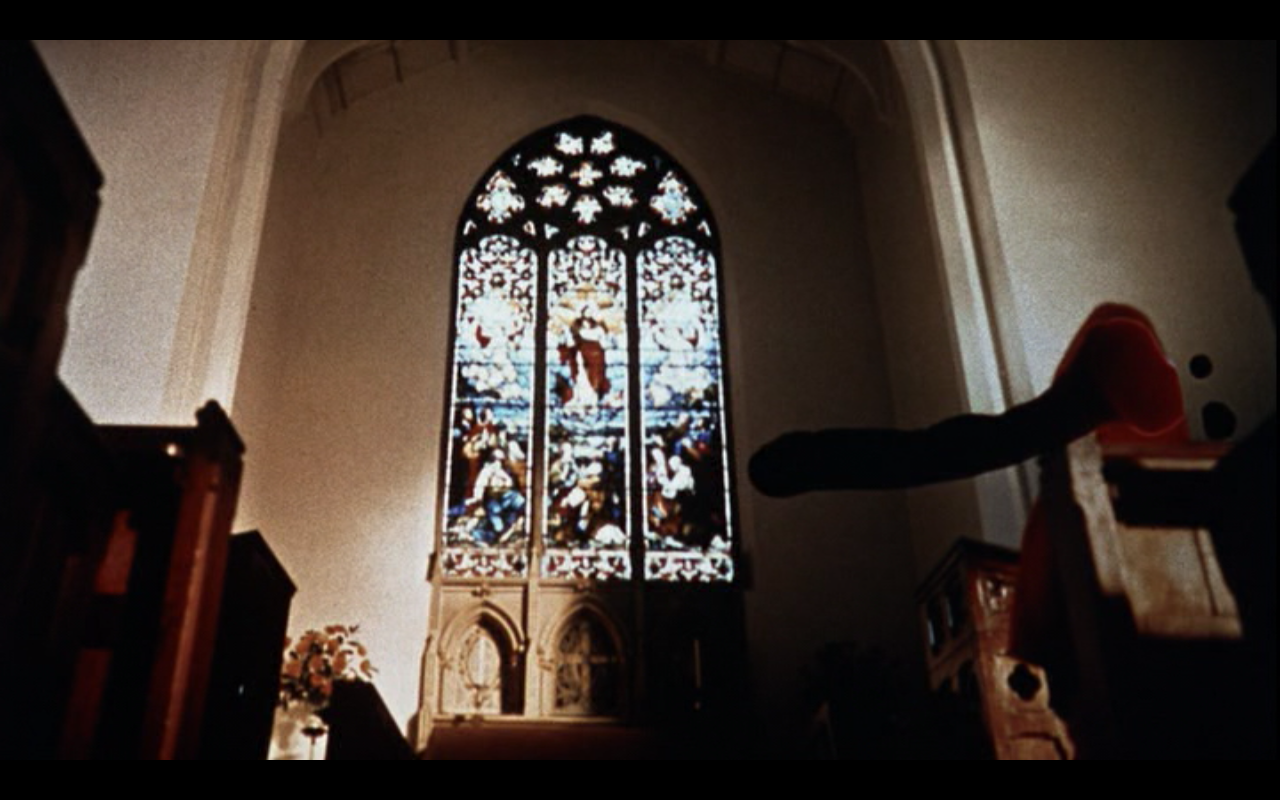
⁂ ⁂ ⁂
And it is here that an interesting paradox can be detected: the role of the image, so central in Nicolas Roeg's cinematic poetics, in the film in question is somehow counterbalanced by the scarce importance that, from a psycho-philosophical point of view, the images have in itself. In Don't Look Now in fact, they rise to the role of mere simulacra, emptied of the meaning that a solid - though perhaps in any case deceptive - external reality could have conferred on them in a mental situation different from that, now totally alienated, of the protagonist.
In this sense, the photograph John is working on as his little girl tragically dies suddenly gets stained by a mysterious bloodstain; the photographic portrait of Laura which he keeps, like a fetish, in his jacket pocket lies, at the end of the film, crumpled, thus making her smile appear disfigured. Furthermore, the portraits (moreover approximate and little more than sketchy) of the Scottish sisters, which John would like to serve as an identikit, are immediately set aside and ignored by the police commissioner; and again, the statues John works on are headless and limbless, e the work that the protagonist carries out once he arrives in Venice serves only from the background and above all da mirror of his tormented psycho-pathological story.
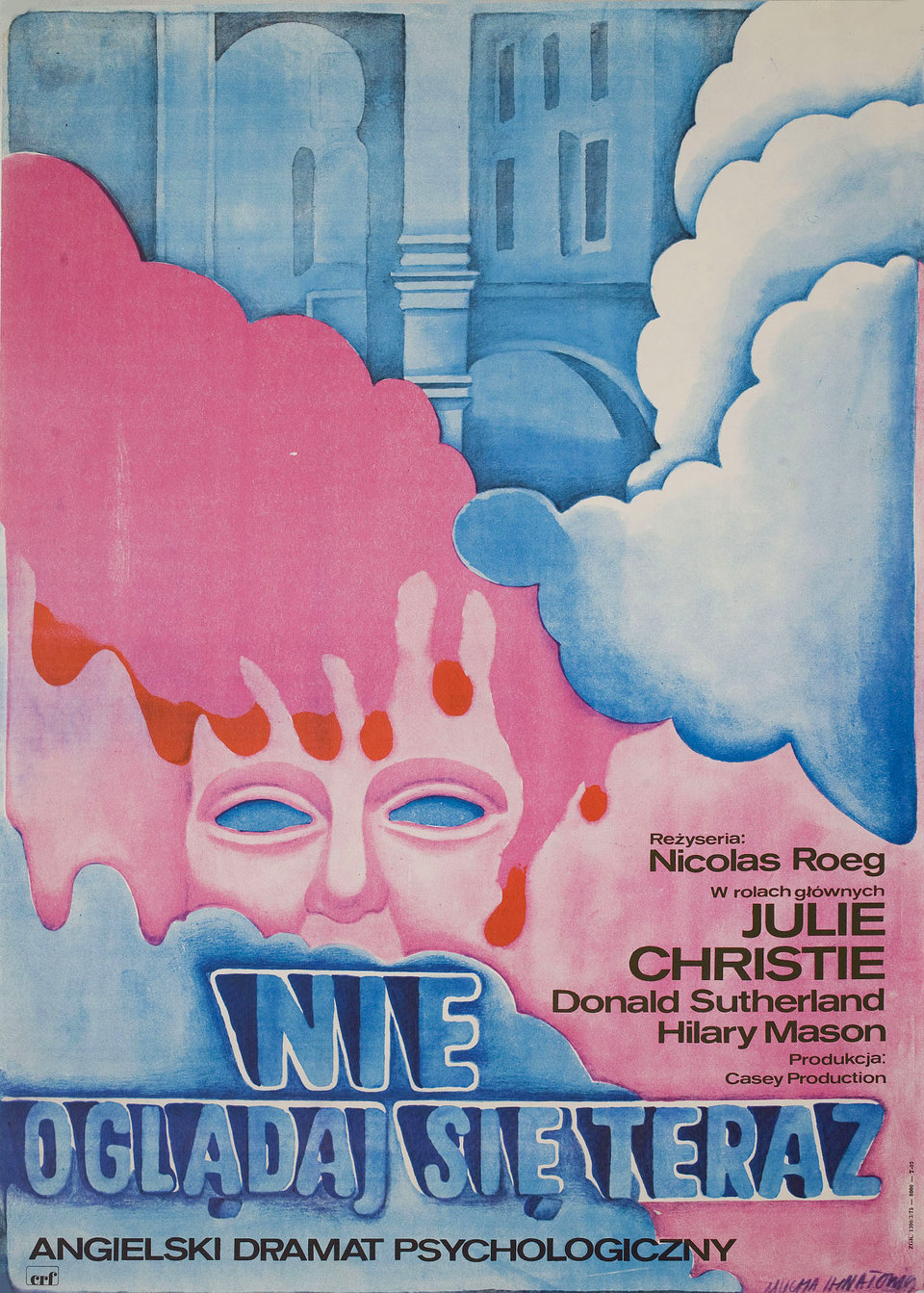
To conclude, we must underline the primary importance of the red color as an element of trauma and death: a chromatic element that underlines the transition between the world of the living and that of the dead. Red is the raincoat that little Christine wears (a name that perhaps deliberately recalls that of the Savior who sacrificed himself for the good of humanity) when she tragically drowns; red is the bloodstain that mysteriously stains photographic film during development; red the cape of the dwarf terrifies that finally, once found face to face with John, stabs him to death.
The word "trauma" derives from the ancient Greek, in which it had both today's meaning and that of "wound": thus, like a snake biting its own tail, Roeg's film combines the initial trauma and the mortal wound that ends the film in an endless circle, under the Red Sign of sacrifice.
As if to underline the fact that salt'soul of humanity, under the guise of Christine, flees from this world in the flow of the waters of the brook, similar to the Virgin Astrea in the Metamorphosis of Ovid, can only follow the trauma of the loss of meaning and, therefore, death.

2 comments on “A Red Death in gray Venice"